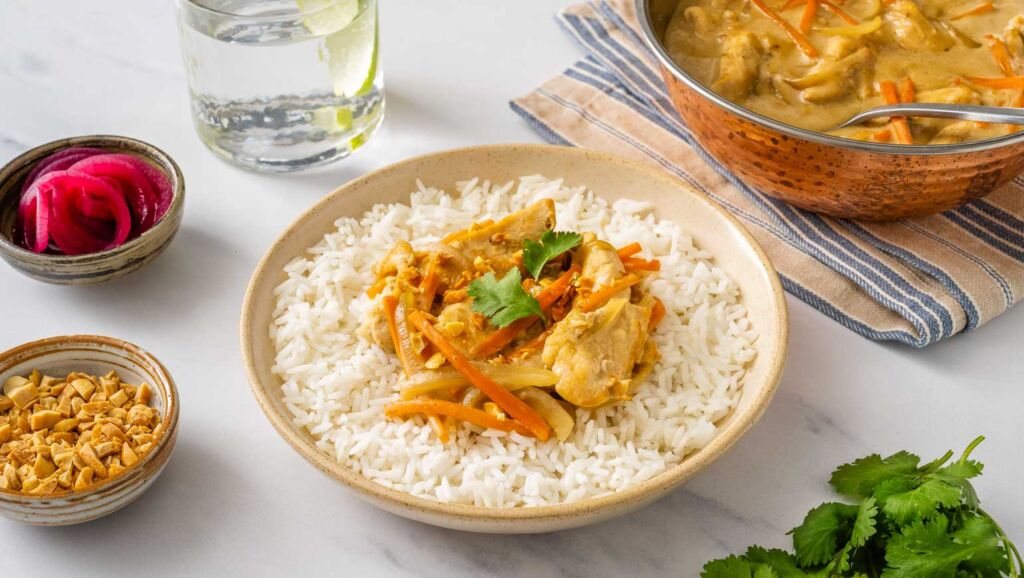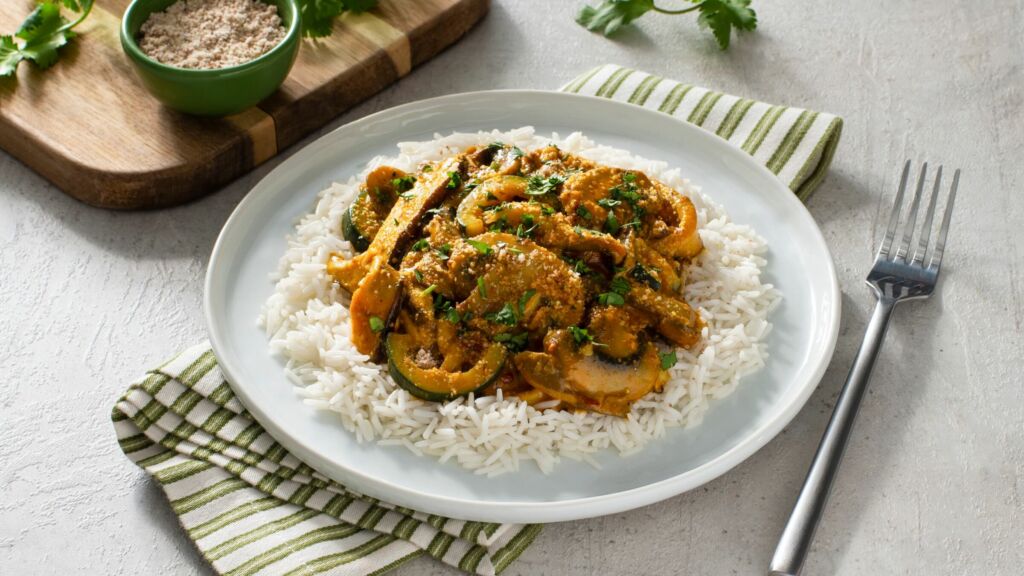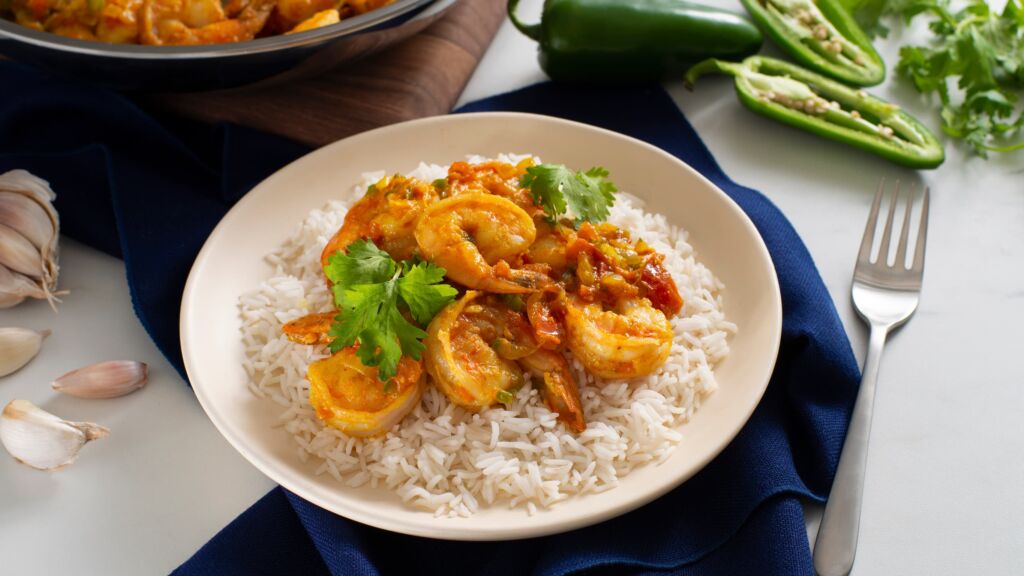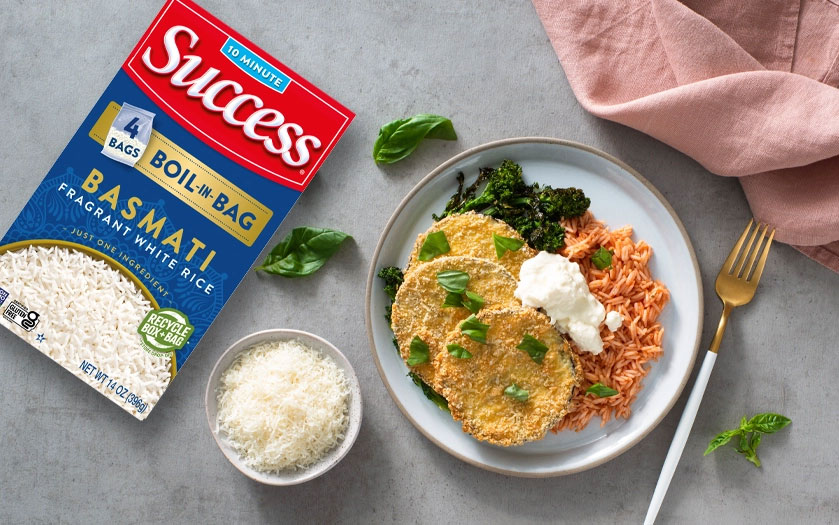Aromatic and exceptionally long-grained, basmati is one of the world’s most prized varieties of rice. Grown predominantly in India and Pakistan, it’s a staple of the South Asian diet whose reach has extended to every country on the globe. Inspired by its roots, many people wonder how to cook basmati rice Indian style.
A must-have when making traditional biryani or pulao, basmati rice is also ideal alongside curries, dals, tandoor-cooked meats and more. Ready to bring the best out of your basmati? Read on for our top tips and tricks to making authentic, Indian-style basmati rice.
Why Basmati Rice Is the Star of Indian Cuisine
Today, basmati rice is grown in many places. Look into its history, however, and you’ll find that it originated in the foothills of the Himalayas. Derived from Sanskrit, its name means “possessing fragrance,” a nod to basmati’s remarkable aroma. What also sets basmati rice apart, is the length of its grains. All varieties of basmati rice are long and slender, with premium varieties among the longest.
When basmati is cooked, its grains grow, sometimes to double their original length. Due to its low starch content, basmati rice cooks up fluffy and separate. Many cooks rinse, then soak, the grains to remove outer starches from the grains and to ensure the lightest possible results.
Widely available and undeniably delicious, basmati has become essential in Indian cuisine. Its light, airy texture and distinct, nutty aroma are prized alongside curries, dals, tandoori chicken, and in richly flavored casseroles. It is also the star of biryani, cooked with meat or seafood, vegetables and plenty of spices.
For delicious results every time, Success® boil-in-bag basmati rice is a convenient, reliable option. No measure, no mess, it doesn’t require rinsing, soaking or guesswork to get just right.
Ingredients for Indian-Style Basmati Rice
The best Indian basmati rice recipes begin with the basics — quality basmati rice, water and salt. The amount of water and rice you use (the water-to-rice ratio) will depend on which cooking method you choose.
Some recipes will call for plain basmati rice, seasoned with little more than salt and a bit of butter or ghee. When learning how to cook Indian basmati rice, other recipes will call for whole spices, such as cumin or mustard seeds, cardamom pods, cloves and bay leaves, to be added to the rice to flavor it during cooking.

How to Cook Basmati Rice Indian Style
Correct Water-to-Rice Ratio
The water-to-rice ratio you use to cook your basmati rice will depend on which cooking method you opt for. On the stovetop, use a 1 1/2:1 ratio (1 1/2 cups water to 1 cup of rice). If steaming the rice in the oven, use a ratio of 1 1/3:1 (1 1/3 cups water to 1 cup of rice)
Should Basmati Rice Be Rinsed or Soaked Before Cooking?
Many cooks believe in rinsing and/or soaking basmati rice before cooking it. These steps help to remove starch from the outer layer of the rice, which helps the rice to elongate and stay separate as it cooks. To rinse basmati rice, place it in a large bowl and cover it with water. Swish it around and drain, using a fine-meshed strainer. Rinse the rice in fresh water 3-4 times. To soak the rice, place it in a bowl and cover it with fresh water. Allow it to sit for 30 minutes before cooking.
How to Cook Indian Basmati Rice on the Stovetop
To cook basmati rice on the stovetop, place rice and water (1 1/2 cups water to 1 cup of rice), into a small saucepan. If you rinse and soak the rice, reduce the water by 2 tablespoons. Add 1/2 teaspoon of salt. Over medium-high heat, bring the water to a simmer. Cover the pot, reduce the heat, and cook for 12-15 minutes, until the water is completely absorbed. Remove the saucepan from the stove and, with the lid on, allow the rice to rest for 10 minutes. Fluff and serve.
Indian Basmati Rice Recipe in the Oven
To cook basmati rice (1 cup) in the oven, start by preheating the oven to 325° F. Then, rinse and soak the grains. Drain the rice and place it into a heavy, ovenproof pot with a lid. Add 1 1/3 cups of water and 1/2 teaspoon of salt. Over medium-high heat, bring the water to a simmer. Cover the pot with aluminum foil, followed by the pot lid, and place it into the oven. Cook for 30 minutes. Remove from oven and let rest for 10 minutes. Fluff and serve.

Common Mistakes and How to Avoid Them
Even cooks who know how to cook Indian basmati rice can sometimes encounter problems. Follow this advice when you run into these issues:
- If your rice is mushy or sticky, it’s probably been cooked with too much water. Always measure carefully! When you rinse and soak basmati rice before cooking it, it’s necessary to reduce the cooking water by a couple of tablespoons. Instead of throwing out mushy rice, try to save or repurpose it for another use.
- If your rice is overcooked or undercooked, make sure you follow the directions closely. The water has to fully come to a boil before you turn down the heat. You also don’t want to leave the heat too high, as the rice will then absorb the water before it is cooked or will scorch on the bottom. Don’t peek at the rice during cooking, as this allows heat to escape. Set a timer to avoid cooking the rice for too long or not long enough. Allowing the rice to rest after it cooks is also essential to perfect results. This will ensure fluffy grains that aren’t stuck together.
- Flavoring rice well is key to learning how to cook Indian rice. If your rice is bland or flavorless, it could just need a little more salt. You can also stir a little butter or ghee into the rice when it’s cooked. Too boost flavor even more, sauté spices and aromatics (try onions, cloves, cumin seeds or cardamom pods) in a saucepan while the rice is soaking. Then, add the rice to the same saucepan and cook as directed. Remove whole spices before serving.
- For more flavor in every grain, you can also cook basmati rice in broth instead of water.
- An alternative that lets you cook dinner in minutes, without any hassle, Success® boil-in-bag basmati rice is fragrant, delicious and light — and ready in just 10 minutes!
Flavor Boosts and Additions for Indian-Style Basmati Rice
When learning how to cook rice Indian-style, you’ll want to pay attention to food pairings and the myriad ways you can flavor basmati to make it pop!
- With a coastline that runs for thousands of miles, India has plenty of popular seafood dishes to pair with basmati rice. From spiced shrimp to savory fish, sophisticated seafood is a natural companion to basmati’s elegant grains.
- Plant-based basmati rice dishes, like this rich and creamy mushroom korma, are also crowd-pleasers that pack a savory punch.
- As mentioned, the flavor of basmati rice can be boosted as it cooks. Try using broth or coconut milk, instead of water, to cook your rice. You can also add sautéed spices and aromatics — including saffron, cumin, anise, garlic or onion — to the rice as it cooks. Dried fruit (such as raisins or diced apricots) and roasted nuts are also delicious stirred into cooked basmati rice. For a bright burst of flavor, add chopped herbs and a spritz of lemon juice to your basmati rice before serving.
- Finally, don’t forget that basmati rice is delicious in a range of cuisines — not just Indian! Try it in this Middle Eastern shawarma recipe tonight.


